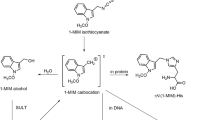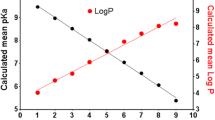Abstract.
Pentachlorophenol (PCP) induces liver cancer in mice, possibly due to covalent binding of PCP metabolites to critical macromolecules. In this work, covalent binding was related to PCP biotransformation and specific (cysteinyl) adducts of chlorinated quinones in liver and blood of Sprague-Dawley rats and B6C3F1 mice dosed with [14C]PCP. Using a sequential scheme of scintillation counting along with selective cleavage of cysteinyl adducts by Raney nickel, we quantified total radiobinding, total covalent binding, non-cysteinyl protein binding, and specific protein adducts in liver nuclei (Np), liver cytosol (Cp), hemoglobin (Hb), and serum albumin (Alb). Almost all of the radiobinding to Np (>98%) was attributed to covalent binding in both rats and mice. Regarding Cp, more covalent binding was observed in mice than in rats (100% versus 67%, P=0.015). Very little binding was attributed to serum Alb (rats 1.3%, mice 2.6%, P=0.046) or Hb (not detected in either species). These results indicate that the liver was the main organ for PCP metabolism and that relatively little of the dose of reactive metabolites became systemically available. Cysteinyl binding accounted for 76–91% of total covalent binding to Np and 68–76% of total covalent binding to Cp. In addition, five times more PCP was bioactivated in the livers of mice than in those of rats (2.14% of the dose bound to Cp in mice and 0.416% in rats). These results reinforce previous studies, suggesting that the liver was a target organ of PCP carcinogenicity and that mice were more susceptible to liver damage than rats. However, the sum of all quantified adducts accounted for only 7–8% of total cysteinyl binding to Np and 2% to Cp, suggesting that other uncharacterized binding species may be important to the toxicity of PCP.
Similar content being viewed by others
Author information
Authors and Affiliations
Additional information
Electronic Publication
Rights and permissions
About this article
Cite this article
Tsai, CH., Lin, PH., Waidyanatha, S. et al. Fractionation of protein adducts in rats and mice dosed with [14C]pentachlorophenol. Arch Toxicol 76, 628–633 (2002). https://doi.org/10.1007/s00204-002-0394-y
Received:
Accepted:
Issue Date:
DOI: https://doi.org/10.1007/s00204-002-0394-y




